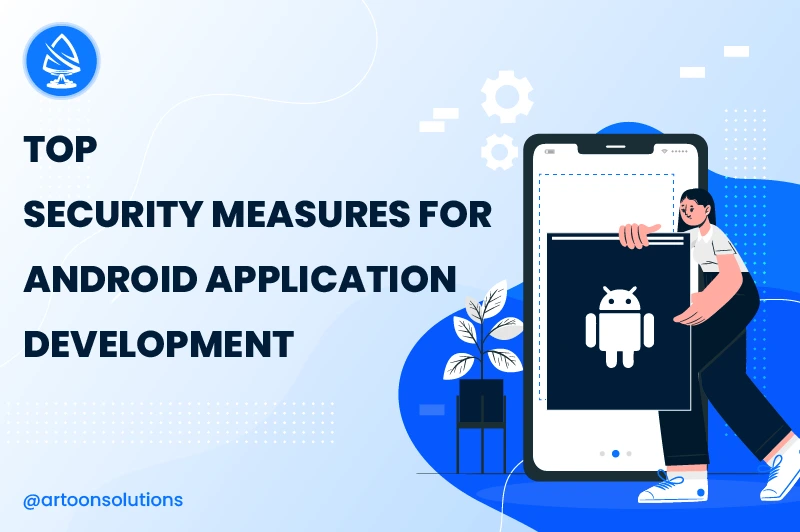- HR:+91-879-9184-787
- Sales:+91-908-163-7774

Software may be at risk of hacking, but certain activities during mobile app development can reduce risks drastically. Take a look at some of the security loopholes an Android app development company can close by adopting specific approaches. Hacking has significantly increased over the past few years.
Read on to get a clearer idea of securing mobile applications during the Android application development process.
Like all software, hackers are constantly looking to find development flaws and exploit them. Therefore, testing and updating releases will continuously be an ongoing process in Android app development.
Failure to keep up with this process will not bode well for the app or users who will have their data compromised. Luckily app owners won’t fall far behind with testing and updating because any Android app development company in India will be able to do it.
Android sandboxes its applications, also known as application containerization. App containerization means applications are kept aside from other applications to prevent security risks from occurring through the spread of other applications.
Sharing data explicitly can help keep the native code secure. You should permit and forbid data permissions to other applications when their use has been fulfilled.
Access to code must be limited to avoid unauthorized people gaining access to it. If they can access it, they may try to alter it. Android app development services can opt for multiple methods for the user to confirm their identity to avoid unauthorized access to the mobile application and its data.
There are three methods of doing so:
This authentication method involves the user providing a code, PIN, or pattern. These options are easier to remember as they do not include alphanumeric codes. However, they may be more prone to being hacked.
The inheritance factor makes use of the unique physical characteristics of the user. It involves biometrics such as fingerprints, retinal scans, and facial or voice recognition.
The last authentication factor is done by using the possession of the user. It could be a sim card, an ID, or a device. Usually, a one-time password is sent and used for authentication.
Code obfuscation involves securing code by making it obscure or difficult to read. While obfuscation is not impossible to decode, it can offer more security. Obfuscation can be done manually or with the help of an automated tool.
Methods of code obfuscation are
Automatically applying one or two obfuscation methods will provide your Android application with a second layer of security.
Android applications will involve a lot of client-server relationships that will include data transferring back and forth. This provides a unique opportunity for the spreading of malicious data.
This induced the need for Secure Socket Layer (SSL) certificates. So, many websites pin their SSL certificate to generate better security. However, excluding certificate pinning has many advantages against individuals looking to infiltrate Android app code.
Encryption involves all aspects of keeping data on devices safe and secure even after transferring data to and from the device and the back-end server.
No one activity can prevent code tamper altogether! Instead, adopting safe practices at every step of the software development life cycle is likely to keep Android applications safe. This means maintaining suitable approaches during designing, developing, and testing.
While undertaking these tasks, Android app developers should be aware of anomalies and unauthorized code access and should act upon it immediately.
Storing sensitive data on a mass storage device without the proper accessibility restrictions could prove very reckless. Servers remain most vulnerable because hackers target the API.
Servers connect the back end and the mobile device. These servers usually cover up for the limitations of devices and are responsible for updates, authentication, and, not to forget security.
Hence you can tell that servers and their security are crucial to Android application development. It’s also a good move to strengthen your APIs using security tools. This helps address the other side of server vulnerability, making your overall app ecosystem more robust and resilient.
Input validation, or data validation as it is called, is the checking and thorough testing of user input to ensure improper data does not find its way into the back-end server.
All apps, regardless of platform, must undergo this process. Also, apps drawing data from external sources must validate the data to ensure it has not experienced any adulteration or corruption.
Android apps have a specific storage directory with a package path based on the app’s name. Every file in this directory is very private because the file has a default private mode setup.
Data in this directory cannot be accessed by any other application on the device, making it the best idea to have all Android app-related data stored in the internal storage directory.
Both HTTP and HTTPS make great use of the hypertext transfer protocol in Android mobile apps. However, one is much more secure than the other! HTTPS secures your app against eavesdropping or malicious attacks.
While using an Android application, users may connect to an unsecured wi-fi network. As a result, the network could alter data being sent to the device, causing the app to malfunction and become compromised.
Because of the vulnerabilities associated with using HTTP, every Android app development company knows that using HTTPS is the most secure option.
With the ever-growing number of Android mobile users, there is a constant need to ensure that Android apps are secure. Not being able to do this would result in a faulty, compromised, or malfunctioning Android App.
If you want to develop an Android app on par with all the latest security measures, consult Artoon Solutions, an expert Android app development company with much experience in mobile app development.